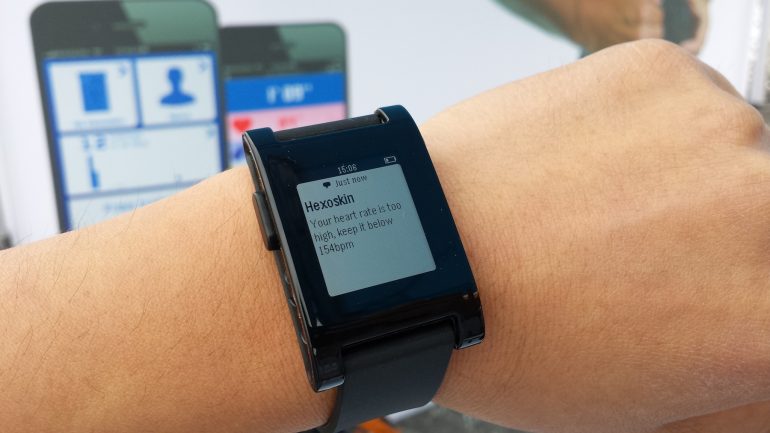“Never give up,” was the advice Pebble CEO and founder, Eric Migicovsky, gave to aspiring entrepreneurs at the JOLT Uncensored event at the MaRS Discovery District Centre last Thursday — advice he had followed for his own company.
For most people, the first time they had heard of Pebble was likely its success on Kickstarter back in 2012. But Migicovsky’s smartwatch journey actually started four years before, in the BlackBerry-centric town of Waterloo.
Born in Vancouver, Migicovsky moved to Southern Ontario to study systems engineering at the University of Waterloo. One year before he graduated he formed his first company, Allerta, to create inPulse, a watch that provided BlackBerry notifications on a user’s wrist. Allerta was one of the first companies in the VeloCity program at UofW.
inPulse was created at a time when the wearable category didn’t exist in the way it does today. Sony Ericsson, LG and Motorola all had watches available on the market, but Migicovsky was determined to build something that he would personally want to use. “We wanted to build something that we could use and that was the driver in the beginning,” Migicovsky told the crowd.
But Migicovsky admits that they learned a lot from shipping the initial batch of inPulse watches. Out of the first twenty they shipped, half of them broke in the shipping process. And the watch’s firmware showed only text messages and not the time. The first watch they created was also not waterproof, had a 24-hour battery and a color screen. “We pretty much created the Apple Watch five years ago,” Migicovsky joked.
In 2011, Migicovsky and his team moved to the Bay area when they were accepted into Y Combinator, making them the third hardware company accepted at the time. It was there that founder Paul Graham suggested that the team open up its watch to the developer community by offering an SDK, an idea inspired by the Apple II which didn’t have a killer app but instead was left open and hackable. Migicovsky took that advice and launched what he says may have been the first SDK for a wearable.
After a hearing “No” from a series of investors in an attempt to raise money for the company, Migicovsky turned to Kickstarter as an alternative. “The Kickstarter worked pretty well,” Migicovsky modestly told the audience. The company smashed its $100,000 goal in 24 hours, eventually raising over $10 million dollars from 69,000 backers. It was the most successful Kickstarter campaign at the time.
Migicovsky attributes the campaign success to the succinct way the product was described: a smartwatch that does more than just tell time, with customizations that are both powerful and easy to use.
But the success of the crowdfunding campaign left Migicovsky and his team with a new challenge: fulfillment. The company wasn’t large and had an unrealistic timeline to deliver its product to backers. This forced the team of ten to make a choice between hiring a large group to make the product or keep things as lean as possible, then ship the product and build the team afterwards.
They decided to keep lean, which Migicovsky said was “the biggest bets of their entire company life.” And it paid off. The vast majority of Pebble backers were patient with the rollout and the company was left with money after the Kickstarter project, keeping them profitable.
Pebble now employs over 100 employees, and has shipped over 400,000 watches, making it one of the most successful smartwatches out there today. Of course, the race is on for this category, especially with Apple recently announcing its Watch, expected in early 2015. When asked about the Apple announcement, Migicovsky said the team felt “relieved.”
“Apple put out their vision [for a smartwatch] but it’s different than Pebble,” he said. Migicovsky believes that Pebble’s simplicity and reliability are two key differentiators for the smartwatch.
Time will tell what the impact Apple and Android Wear watches will have on Pebble. But Migicovsky’s determination is a strong indicator that this smartwatch is ready for the fight.





